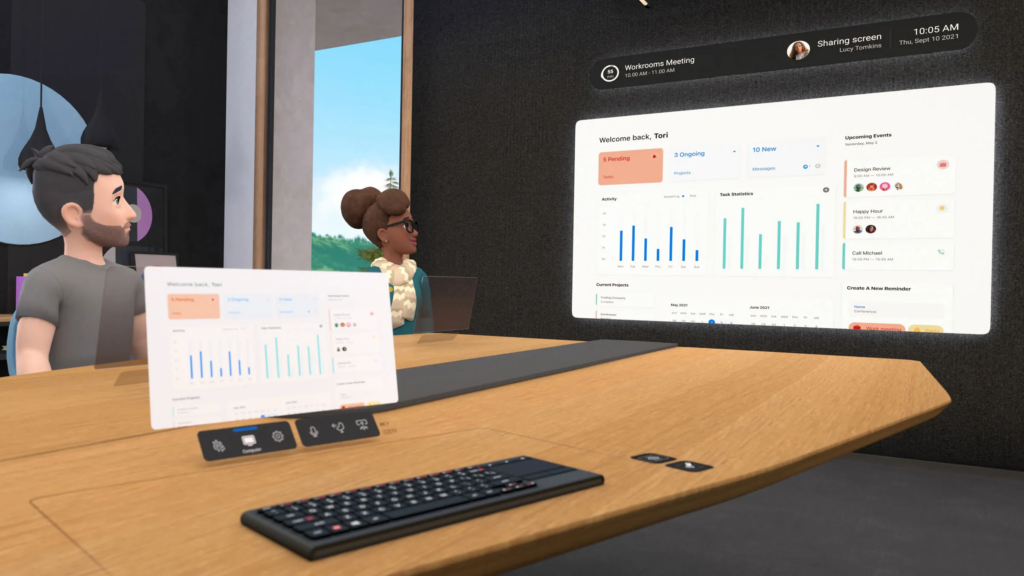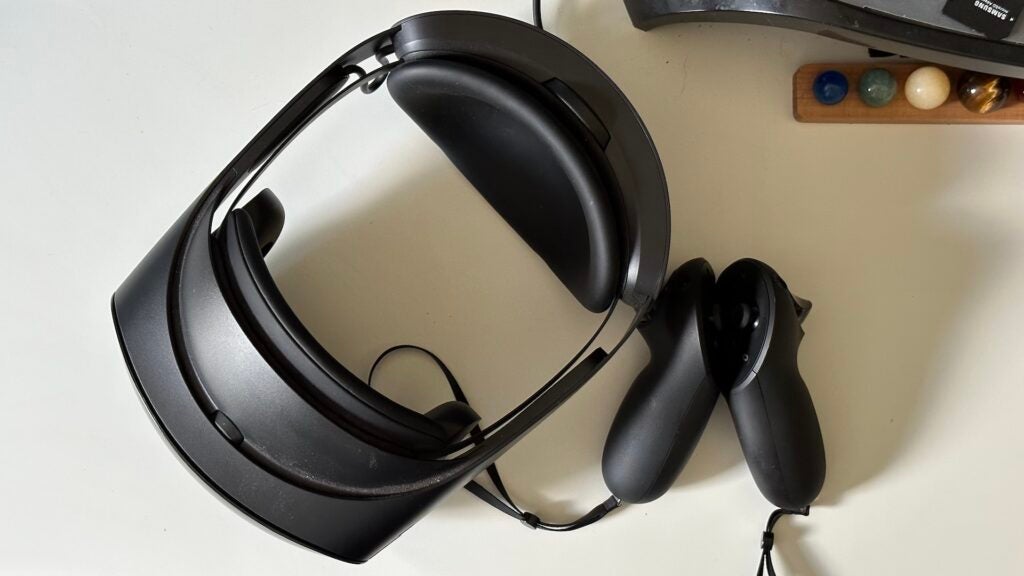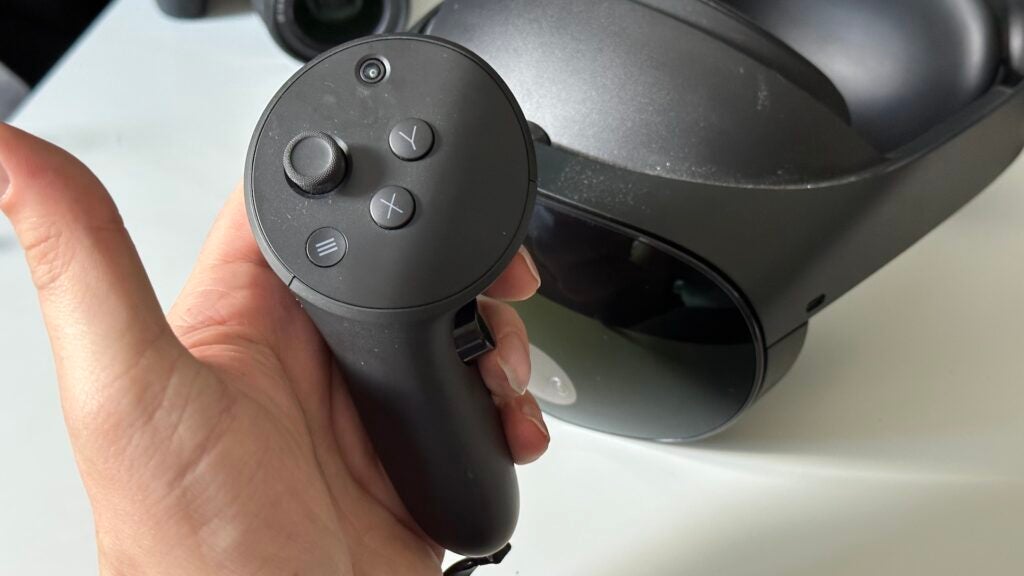Meta has announced its latest mixed reality headset in the form of the Quest 3S, a much more budget-friendly alternative to the top-end Meta Quest Pro.
Considering the Quest 3S has a starting RRP of under £300, whereas the Quest Pro starts at a whopping £999, does splurging guarantee more features?
We’ve compared the specs of the upcoming Quest 3S to the 3.5-star Quest Pro to help you decide whether it’s worth opting for the more expensive headset.
Spec comparison
| Meta Quest 3S | Meta Quest Pro | |
| UK RRP | £289.99 | £999 |
| US RRP | $299.99 | $999 |
| Manufacturer | Meta | Meta |
| Storage capacity | 128GB, 256GB | 256GB |
| Release Date | 2024 | 2022 |
| Processor | Snapdragon XR2 Gen 2 | Snapdragon XR2 Plus Gen 1 |
| Display Resolution | 1832 x 1920 | 1800 × 1920 |
| Refresh Rate | 120Hz | 90Hz |
Price
The Meta Quest 3S is currently available for pre-order ahead of launch on 15th October. Available in two sizes, 128GB or 256GB, the Quest 3S has a starting RRP of £289.99/$299.99.
The Meta Quest Pro was one of the first mixed reality headsets, having launched back in 2022 with an RRP of £999/$999 for the sole 256GB model. However, Meta confirmed in late September 2024 that the Quest Pro has been discontinued and will only remain in stores while stock lasts.
The Quest Pro has face and eye-tracking technology
Unlike the Quest 3S, the Quest Pro boasts face- and eye-tracking sensors that allow the headset to track your gaze and facial expression and use this data in VR apps. This allows players to interact more intuitively within games while also offering a more lifelike social experience, especially in apps like Meta Horizon.


We found this technology allows you to better communicate with people in VR and is able to “pick up on the smaller nuances in human communication”. However as this technology can only be found in the Quest Pro, the people you’re interacting with will also need the headset in order for you to benefit from it.
The Quest 3S has a higher max refresh rate
Perhaps surprisingly as it’s the more affordable option, the Quest 3S offers a 90-120Hz refresh rate which means graphics are smoother and more realistic, able to render between 90 and 120fps.
Comparatively, the Quest Pro only reaches 90Hz, which means it falls short not only of the Quest 3S and the Quest 2 but also the PS VR2.


The Quest Pro has a larger battery
The Quest Pro’s battery has a 5348mAh cell while the Quest 3S has a slightly smaller 4324mAh capacity. Even so, Meta states that both headsets have a 2.5-hour runtime, though as we’re yet to test the Quest 3S, we can’t confirm if this is the case.
You can also extend the Pro’s battery life to three hours by switching off face and eye tracking but that defeats the purpose of the headset. In our review of the Pro, we were left disappointed with its battery performance, especially when you consider the high price tag.
The Quest Pro also offers convenient charging of both the headset and the controllers via the included dock. Instead, the Quest 3S uses a USB-C port to recharge the headset while the controllers are powered by AAA batteries that will require replacing.


The controllers on the Quest Pro are self-tracked
Much like the Quest 3, the Quest 3S’ controllers need to be in view of the head-mounted display (HMD) for tracking whereas the Quest Pro controllers can be tracked without being in view of the HMD.
The self-tracking of the Quest Pro is possible thanks to its three camera sensors and built-in chipset for spatial calculations, while the Quest 3S’ tracking uses computer vision and machine learning.


The Quest 3S uses the Snapdragon XR2 Gen 2 chipset
Despite being the more affordable option, the Quest 3S runs on a newer chipset than the Quest Pro. While the latter uses 2022’s Snapdragon XR2 Plus Gen 1, the Quest 3S instead uses 2023’s Snapdragon XR2 Gen 2 processor.
Both processors are designed for XR (extended reality), with the Snapdragon XR2 Plus Gen 1 offering “increased power and thermal performance and intelligent computer vision” compared to the previous generation.
The Snapdragon XR2 Gen 2 is also found in the full-fat Meta Quest 3, and we praised its souped-up performance in our review of that headset. We’re expecting similar things from the Quest 3S, but we’ll have to go eyes-on to confirm.


Early Verdict
Although we haven’t reviewed the Quest 3S yet, it promises to be a budget-friendly headset that still boasts premium features and a capable chipset.
At this early stage, we’d recommend opting for the 3S if you’re looking for a more affordable way to benefit from VR. However, if you’d prefer to make use of eye and face tracking technology then the Quest Pro might be a better option for you.




